This bird nest becomes a ‘fortress’ using antibird spikes
Some magpies may use the spikes for their original purpose — to ward off other birds
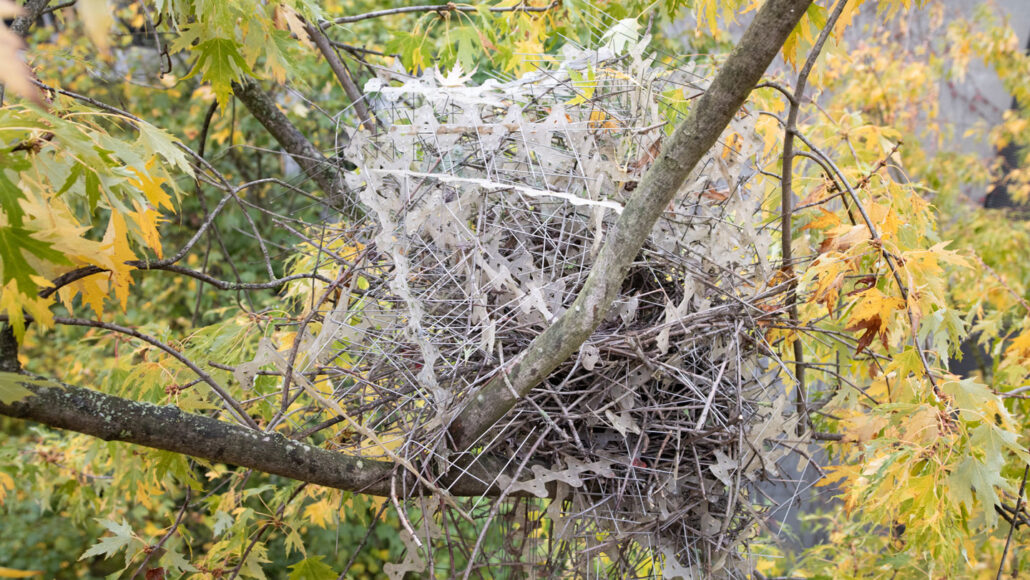
This Eurasian magpie nest sits in a sugar maple tree in Antwerp, Belgium. Unlike most magpie nests, it was made partly out of more than 1,500 “antibird” spikes.
Auke-Florian Hiemstra
Along with metal, clay, twigs and plastic, some recently described birds’ nests include a surprising new building material: long, sharp antibird spikes.
The largest such nest brims with roughly 1,500 spikes that point out from its center. “That is really like a bunker for birds,” says biologist Auke-Florian Hiemstra. “Like this fortress which cannot be taken.” Hiemstra studies nests and plastic pollution. He works in the Netherlands at Naturalis Biodiversity Center in Leiden.
A total of five nests decorated with the spikes have been found in Europe. The pointy strips of bird-deterrent materials normally line building eaves. They’re meant to keep birds from landing along the roofline. Now, some birds have repurposed the spikes to line their homes.
Hiemstra is part of a team that described the nests on July 11 in Deinsea.
Tipped off by an observant hospital patient
The study started when a hospital patient in Antwerp, Belgium, looked out his window and marveled at an unusual nest. He sent its picture to Hiemstra. His team traveled to collect the nest — but not until after breeding season. Back in the lab, the biologists studied it closely. As Hiemstra wrote up a report on what they found, he heard about four similar nests. These were in the Netherlands and Scotland.
Eurasian magpies (Pica pica) and carrion crows (Corvus corone) built these nests. Crows used the spikes as part of their nests’ structure. Hiemstra believes the magpies instead used them as they were intended: to ward off other birds.
-
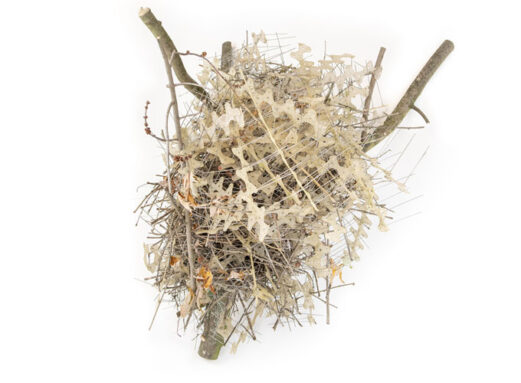
Removed from its tree, this nest started the new study. It was built by a Eurasian magpie. Some 50 meters (160 feet) of antibird strips — originally meant to deter birds from landing on buildings — adorn the nest. Auke-Florian Hiemstra -
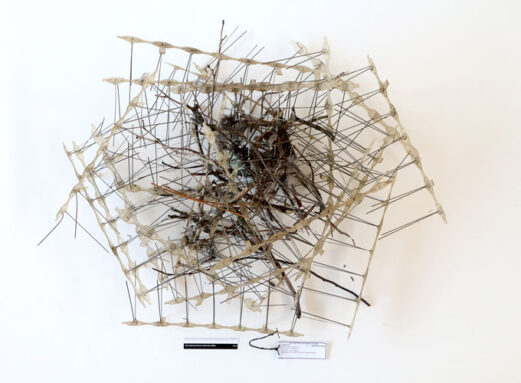
This carrion-crow nest was found in a poplar in the Netherlands. The structure contains 24 antibird strips with a total of 336 spikes. The strips were likely collected from a nearby construction site. The nest also hosts netting used to keep birds from gardens and balconies. Kees Moeliker -
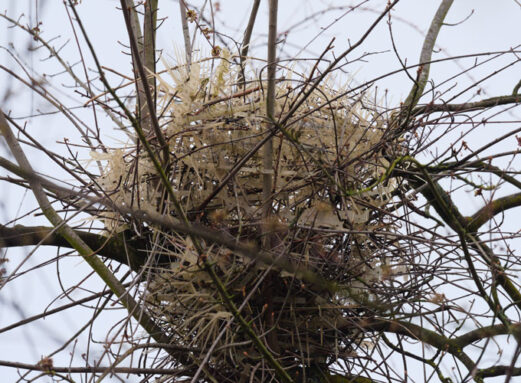
This Eurasian magpie nest was spotted in an ornamental plum tree in the Netherlands. The spikes in this nest are a mix of materials. Some have metal pins. Others are entirely plastic. Wijnand Koekoek -
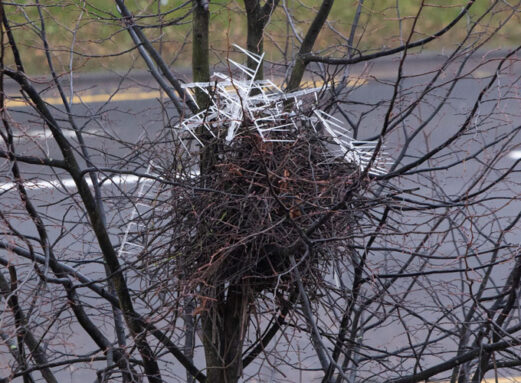
Found in a residential area of Glasgow, Scotland, this Eurasian magpie nest has a bird-deterrent material covering its top. Max Crawford
Magpies are relatively small. Larger birds prey on magpie eggs and hatchlings. For protection, magpies create domed roofs over their nests and often adorn them with thorny branches. But in large cities, spiny vegetation can be hard to find. Being creative, magpies will build with whatever materials are nearby. Some have used nails, screws or knitting needles. This study is the first to document birds nesting amid antibird spikes.
The observations are “fascinating,” says Zuzanna Jagiełło. She is an ecologist at the University of Warsaw in Poland. She did not take part in the study. Jagiełło also applauds the team’s use of citizen science. That is scientific research in which the public participates.
She would like to see more experiments or real-life observations. Otherwise, it’s hard to be sure that the spikes were chosen to scare away other birds. “It’s a starting point to explore [the phenomenon] more deeply,” she says.
Hiemstra has now received reports of more nests made with spiky materials. This suggests to him that this may be more common than previously thought. Finding more such nests will help him investigate new research questions. For example, he might be able to study if using spikes boosts the survival of young magpie nestlings.
Beyond his scientific excitement, Hiemstra can’t help but laugh when he thinks of the birds using human defenses as their own. “I just love the irony of it all,” he says. “It’s just the perfect comeback of the birds.”








